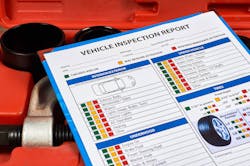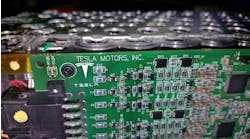Since the Highway Safety Act of 1966, state vehicle inspection programs have seen good times and bad. This law mandated the U.S. Department of Transportation (DOT) to establish uniform standards for mandatory highway safety programs, one of which being the requirement that states conduct periodic motor vehicle inspections. If states did not comply with these requirements, it put them at risk of getting federal highway dollars withheld.
In 1975, 31 states and the District of Columbia had periodic inspection programs. However, when Congress passed the Highway Safety Act of 1976 revoking the authority to withhold highway funds from DOT, 10 states repealed their inspection programs. After the 1990 Clean Air Act amendments, vehicle safety inspection programs were often negatively associated with emissions inspection and maintenance programs (I/M), which had significant consumer issues and received very bad press.
Today, 15 states have periodic (annual or biennial) safety inspection programs. Several states with successful vehicle safety inspection programs, Pennsylvania and Texas, have produced reports that correlate a lower number of accidents, injuries, and deaths in states that have mandatory vehicle safety inspections than those that do not.
As vehicle technology advances, many are looking toward autonomous vehicles as the new frontier for eliminating vehicle crashes and deaths. A study by the National Highway Traffic Safety Administration (NHTSA) has shown that 94 percent of crashes are due to human error. However, there has been difficulty in passing legislation that would create a pathway for autonomous vehicle development, manufacture, and eventual widespread deployment.
In the 115th Congress, the U.S. House of Representatives passed H.R. 3388, the SELF DRIVE Act, and the U.S. Senate considered, but did not vote on, a slightly different piece of legislation, S. 1885, the AV START Act. Both pieces of legislation would have established a federal regulatory framework for the design, construction, and performance of highly autonomous vehicles, expanded DOT’s ability to provide exemptions for autonomous vehicle testing, and directed NHTSA to establish a new set of safety rules.
This year, Senator John Thune (R-SD), the former chair of the U.S. Senate Committee on Commerce, Science, and Transportation, attempted to reintroduce autonomous vehicle legislation in the form of an amendment to S. 1260, the Endless Frontier Act. This amendment would have raised the exemption cap for autonomous vehicles. However, Thune offered and then immediately withdrew the amendment, citing “the two big T’s, which are the trial lawyers and the Teamsters” for blocking the resurrection of the 2018 legislation.
During a May hearing of the U.S. House Energy and Commerce Committee, the National Brotherhood of Teamsters and the Transportation Trades Department of the AFL-CIO unveiled their joint principles for autonomous vehicle (AV) legislation. These principles included a priority on safety, as outlined in a 2020 report from the Advocates for Auto Safety entitled “Autonomous Vehicle Tenets: A GPS to Guarantee Public Safety.” These tenets are:
- Preserve consumer and worker rights
- Prioritize safety
- Protect all road users
- Retain local control
- Ensure sustainable transportation
- Guarantee accessibility and equity
Included under the tenet of “prioritizing safety” is a long list of proposed federal standards that seek to address known and foreseeable safety issues. However, excluded from this list is mandatory vehicle safety inspections. Regular mandatory vehicle inspection programs have been proven to reduce accidents, injuries, and deaths, as referenced above. This begs the question: why not have mandatory safety inspection programs for highly autonomous vehicles post-purchase?
A strong federal regulatory framework for the development, testing, and deployment of autonomous vehicles is essential to ensure that these vehicles are safe when they leave the factory to consumers and public roads. However, a mandatory, regular inspection of autonomous vehicles would ensure that the vehicle stays safe long after it leaves the dealer showroom — meaning that roads and drivers stay safe as well.



